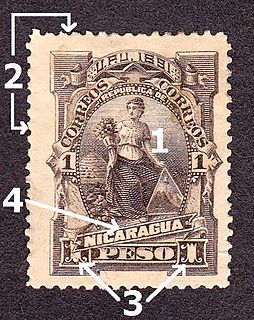
A postage stamp is a small piece of paper issued by a post office, postal administration, or other authorized vendors to customers who pay postage, who then affix the stamp to the face or address-side of any item of mail—an envelope or other postal cover —that they wish to send. The item is then processed by the postal system, where a postmark or cancellation mark—in modern usage indicating date and point of origin of mailing—is applied to the stamp and its left and right sides to prevent its reuse. The item is then delivered to its addressee.
A first day of issue cover or first day cover (FDC) is a postage stamp on a cover, postal card or stamped envelope franked on the first day the issue is authorized for use within the country or territory of the stamp-issuing authority. Sometimes the issue is made from a temporary or permanent foreign or overseas office. Covers that are postmarked at sea or their next port of call will carry a Paquebot postmark. There will usually be a first day of issue postmark, frequently a pictorial cancellation, indicating the city and date where the item was first issued, and "first day of issue" is often used to refer to this postmark. Depending on the policy of the nation issuing the stamp, official first day postmarks may sometimes be applied to covers weeks or months after the date indicated.

A cancellation is a postal marking applied on a postage stamp or postal stationery to deface the stamp and to prevent its reuse. Cancellations come in a huge variety of designs, shapes, sizes, and colors. Modern cancellations commonly include the date and post office location where the stamps were mailed, in addition to lines or bars designed to cover the stamp itself. The term "postal marking" sometimes is used to refer specifically to the part that contains the date and posting location, but the term is often used interchangeably with "cancellation." The portion of a cancellation that is designed to deface the stamp and does not contain writing is also called the "obliteration" or killer. Some stamps are issued pre-cancelled with a printed or stamped cancellation and do not need to have a cancellation added. Cancellations can affect the value of stamps to collectors, positively or negatively. Cancellations of some countries have been extensively studied by philatelists, and many stamp collectors and postal history collectors collect cancellations in addition to the stamps themselves.

The Penny Black was the world's first adhesive postage stamp used in a public postal system. It was first issued in the United Kingdom, on 1 May 1840, but was not valid for use until 6 May. The stamp features a profile of Queen Victoria.

The Uniform Penny Post was a component of the comprehensive reform of the Royal Mail, the UK's official postal service, that took place in the 19th century. The reforms were a government initiative to eradicate the abuse and corruption of the existing service. Under the reforms, the postal service became a government monopoly, but it also became more accessible to the British population at large through setting a charge of one penny for carriage and delivery between any two places in the United Kingdom of Great Britain and Ireland irrespective of distance.

Postal history is the study of postal systems and how they operate and, or, the study of the use of postage stamps and covers and associated postal artifacts illustrating historical episodes in the development of postal systems. The term is attributed to Robson Lowe, a professional philatelist, stamp dealer and stamp auctioneer, who made the first organised study of the subject in the 1930s and described philatelists as "students of science", but postal historians as "students of humanity". More precisely, philatelists describe postal history as the study of rates, routes, markings, and means.

Postage stamps and postal history of Great Britain surveys postal history from the United Kingdom and the postage stamps issued by that country and its various historical territories until the present day.
The Penny Post is any one of several postal systems in which normal letters could be sent for one penny. Five such schemes existed in the United Kingdom while the United States initiated at least three such simple fixed rate postal arrangements.
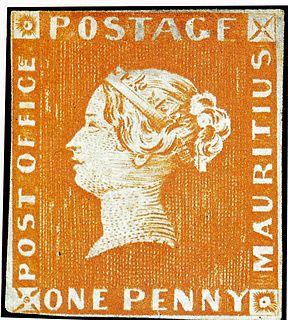
The Mauritius "Post Office" stamps were issued by the British Colony Mauritius in September 1847, in two denominations: an orange-red one penny (1d) and a deep blue two pence (2d). Their name comes from the wording on the stamps reading "Post Office", which was soon changed in the next issue to "Post Paid". They are among the rarest postage stamps in the world.
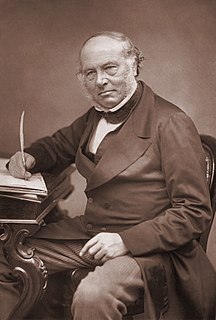
Sir Rowland Hill, KCB, FRS was an English teacher, inventor and social reformer. He campaigned for a comprehensive reform of the postal system, based on the concept of Uniform Penny Post and his solution of pre-payment, facilitating the safe, speedy and cheap transfer of letters. Hill later served as a government postal official, and he is usually credited with originating the basic concepts of the modern postal service, including the invention of the postage stamp.

The postage stamps of Ireland are issued by the postal operator of the independent Irish state. Ireland was part of the United Kingdom of Great Britain and Ireland when the world's first postage stamps were issued in 1840. These stamps, and all subsequent British issues, were used in Ireland until the new Irish Government assumed power in 1922. Beginning on 17 February 1922, existing British stamps were overprinted with Irish text to provide some definitives until separate Irish issues became available. Following the overprints, a regular series of definitive stamps was produced by the new Department of Posts and Telegraphs, using domestic designs. These definitives were issued on 6 December 1922; the first was a 2d stamp, depicting a map of Ireland. Since then new images, and additional values as needed, have produced of nine definitive series of different designs.

Aden is a city in southern Yemen. Aden's location made it a popular exchange port for mail passing between places around the Indian Ocean and Europe. When Captain S. B. Haines of the Indian Marine, the East India Company's navy, occupied Aden on 19 January 1839, mail services were immediately established in the settlement with a complement of two postal clerks and four letter carriers. An interim postmaster was appointed as early as June 1839. Mail is known to exist from 15 June 1839 although a regular postmaster was not appointed until 1857; one of the officials of the Political Agent or the civil surgeon performed the duties of postmaster for a small salary.

In philatelic terminology a letter sheet, often written lettersheet, is a sheet of paper that can be folded, usually sealed, and mailed without the use of an envelope, or it can also be a similar item of postal stationery issued by a postal authority. Letter sheets derive from the form in which written correspondence was made up before the mid-19th century — letters were written on one or more sheets of paper that were folded and sealed in such a way that the address could be written on the outside.
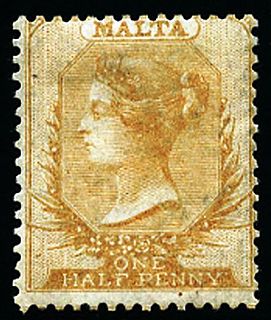
The postal history of Malta began in the early modern period, when pre-adhesive mail was delivered to foreign destinations by privately owned ships for a fee. The earliest known letter from Malta, sent during the rule of the Order of St John, is dated 1532. The first formal postal service on the islands was established by the Order in 1708, with the post office being located at the Casa del Commun Tesoro in Valletta. The first postal markings on mail appeared later on in the 18th century.

Official mail is mail sent from, or by, an authorized department of government, governmental agency or international organization and normally has some indication that it is official; a certifying cachet, return address or other means of identity, indicating its user. In some countries, postage stamps have been issued specifically for official mail.
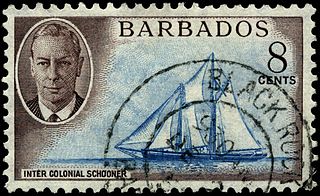
This is a survey of the postage stamps and postal history of Barbados.
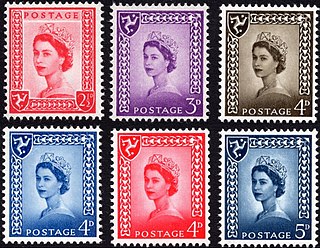
This is a survey of the postage stamps and postal history of the Isle of Man.
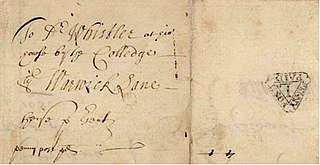
The Fletcher Collection is Hugh Greenwell Fletcher's lifetime philatelic collection of British postage stamps and British stamps used abroad including overprints and non-stamp items such as postal stationery. On his death in 1968, the collection was bequeathed to the Bruce Castle Museum in Tottenham, once the home of Sir Rowland Hill. The collection was donated to the British Library in 1989.

This is a survey of the postage stamps and postal history of South Australia, a former British colony that is now part of Australia.

The Postage Act 1839 (c.52) was an act of the United Kingdom of Great Britain and Ireland that came into effect on 17 August 1839 to regulate the postage rates of Great Britain until 5 October 1840 and led to several postal reforms, including the introduction of the Uniform Penny Post and the world's first postage stamps.

















